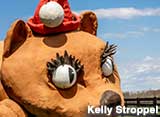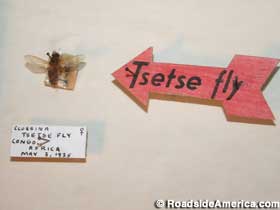
May Natural History Museum of the Tropics
Colorado Springs, Colorado
The foothills of the eastern Rocky Mountain are an unlikely place to find jungle bugs. But Colorado Springs is in fact an ideal spot for foot-long millipedes, bird-eating spiders, and beetles as big as your fist -- as long as they're dead.
"They probably could last forever as long as we keep them dry," said Lynda Senko, who runs the May Natural History Museum of the Tropics along with members of her family. The exotic bugs -- over 100,000 by her guess -- were collected by her father and grandfather, John and James May, amateur naturalists.
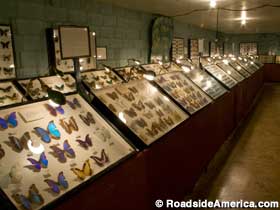
Unlike some modern insect museums, which are padded with 4-D theaters and edutainment displays, the May Museum is nothing but bugs, case after case of them, presented much as they were when John May opened the place in 1952.
The family tried moving their museum to Weeki Wachee Springs in Florida in the early 1960s. Big mistake. Humidity may be great for living insects but it's terrible for dead ones. "My dad had to build sealed metal cases; he had to build a dehumidifier; he would hose in dry air," Lynda recalled. None of it worked. The Mays moved the museum, and its giant beetle billboard, back to its original, dry, Colorado Springs location, a few bugs shy but wiser.
No magnifying glass is needed to view the stars of the May Museum. Perhaps John May wanted to convey the horror of waking in the jungle with a tarantula the size of a doughnut on his face. There are foot-and-a-half long New Guinea stick insects; Indian moths with ten-inch wingspans; beetles so massive that they "can break street lights and knock a man down if they hit him while flying," according to their exhibit. All are displayed old-style, crucified to boards with a pin through the gut.
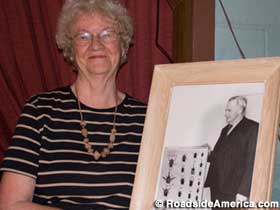
Lynda Senko.
The museum has scorpions, tsetse flies, and a death's head moth that met its end in 1904 (all of the bugs are dated). A display case promising live Black Widow spiders was empty. "At the end of the season we always let them go," Lynda explained, "and we just haven't caught another one. They're everywhere." This did not reassure us.
"People always ask, 'Was your father ever bit?'' Lynda said. "Well, I imagine he was, but he knew how to pick 'em up." One yellowed newspaper clipping in the museum describes how James and John May would shoot down giant flying insects with a gun loaded with sand.
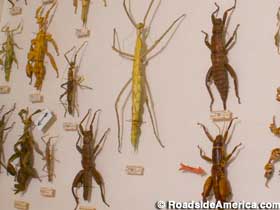
The museum is itself a preserved specimen, with Lynda assuring us that "we don't really want to do anything to it." The walls are cinderblock (John May didn't want any fires), the displays are homemade and minimal. Old gooseneck lamps illuminate the insects, most with individual hand-lettered labels, thousands of them. Some of the moths and dragonflies, dead almost a century, are faded with age. There's nothing slick about the May Museum -- and it's okay. You don't want to get too interactive with bugs. It's perfectly acceptable to keep them on the other side of the glass.
Displays with titles such as "War Against The Insects" and "Tiny, Ruthless Ant World," reflect our no-longer-fashionable animosity toward creepy-crawly creatures. Lynda agreed that most people coming to the museum nowadays like bugs, and that her father and grandfather did, too, even if they killed tens of thousands of them to prove it.
In an era when exotic bugs are exploited as reality show snack treats, the May Museum reminds us of how special they really are. And viewing these unembellished tropical horrors makes you appreciate the relatively inoffensive insects of the United States, and feel a little sheepish the next time you want to complain about fire ants and bedbugs.




